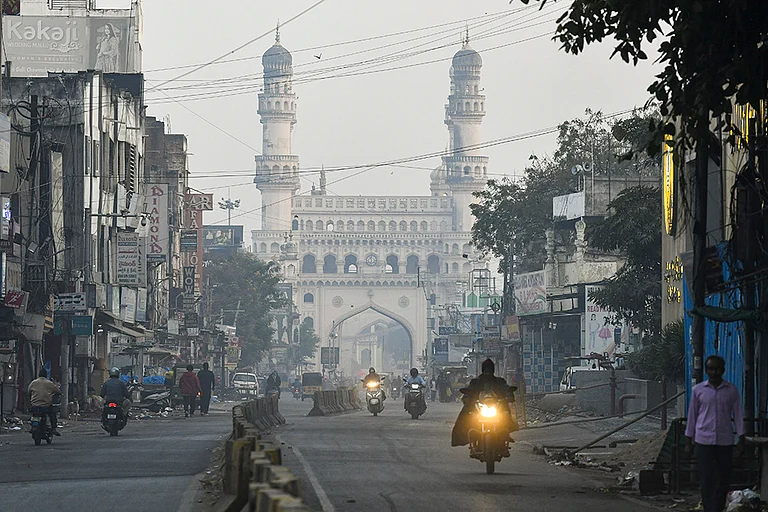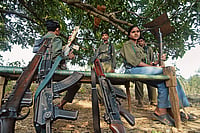The retreat of Himalayan glaciers and an erratic monsoon pattern —two of the most visible impacts of climatic changes in and around India— are going to make life more difficult in the coming days, according to a report released at the 27th United Nations Climate Change Conference or Conference of the Parties (COP-27) of the UNFCCC in Egypt on Thursday.
The report said, “Glacier retreat in the Himalayas threatens water supply, particularly under drought conditions. The Himalayas provide water for 1.3 billion people in the vicinity of 10 major river basins in Asia. Lack of water resources increases agricultural vulnerability to the changing climate, affecting the food security and health of large populations.”
The report, titled 10 New Insights In Climate Science, is a work of more than two dozen scientists and researchers from around the world and has been produced by Future Earth, The Earth League, and World Climate Research Programme.
There are three major Himalayan rivers in India —the Indus in the northwest, Ganga in the north and east, and Brahmaputra in the northeast— apart from many of their tributaries. India’s northern, eastern, north-eastern, and north-western states are heavily dependent on these three rivers and their tributaries. Less water flowing through these rivers can impact agriculture and fishing-dependent communities.
Speaking to Outlook over phone, Aditi Mukherji, one of the authors of the report, said that glacial retreats not only reduce water availability in the rivers but also put hydropower projects in the Himalayan region under greater risk from events of glacial lake outburst floods (GLOF).
Glacier retreat leads to the formation and development of glacial lakes. Breaches in such lakes can potentially cause devastating floods in downstream hilly regions.
Significantly, large hydropower projects are on India’s focus to reduce dependence on fossil fuels, emissions from which are the major cause of global warming. Hydroelectric projects ranging from 500 megawatts (MW) to 1,800MW of installed capacity are existing, are under construction, or are in the pipeline in the Himalayan states of Sikkim, Uttarakhand, and Himachal Pradesh, and the Union territories of Jammu and Kashmir and Ladakh.
Speaking on the possible impact on water flow in Himalayan rivers, Mukherji said that reduction in water flow due to glacial retreats will impact the Indus region more than Ganga and Brahmaputra because the former has greater dependence on glaciers while the latter two are significantly dependent on monsoon.
“The Ladakh region is at a greater risk from implications of glacial retreat,” said Mukherji, Director of Climate Change Impact Platform at the Consultative Group for International Agricultural Research (CGIAR).
Originating in Tibet, Indus flows through Ladakh before entering Pakistan. Of its 2,880-km length, 709 km lies in India, spread over a catchment area of 3,21,248 sq km. The Indus river basin, which includes its tributaries, is spread over the Union territories of Jammu and Kashmir, Ladakh, and Chandigarh, and the states of Punjab, Himachal Pradesh, Haryana.
Mukherji told Outlook that farmers in Ladakh were already witnessing some impacts of glacial retreats, as water is coming down earlier than expected, at a time when the people are not prepared for farming because the land in the villages is still frozen.
She said, “The situation is such that people in Ladakh dependent on farming are considering relocation.”
The Ganga flows through Uttarakhand, Uttar Pradesh, Bihar, and West Bengal, but the river basin also covers the states of Madhya Pradesh, Chhattisgarh, and Jharkhand. The Brahmaputra basin covers large parts of north-eastern India. Of them, Uttar Pradesh, Bihar, and West Bengal make one of the most-densely populated regions in India.
The impacts of glacial retreat may be compounded with the impacts of the changing monsoon pattern. The report said, “More variable patterns of tropical monsoon systems in South America, India and Southeast Asia…could lead to weather extremes that further expose human vulnerability in densely populated coastal areas.”
The recently observed monsoon trends in India hint at sudden, heavy rain in quick bursts following prolonged dry periods.
The impacts that the report warned about can already be seen, according to Himanshu Thakkar, coordinator of South Asia Network of Dam, River and People (SANDRP), a rights and advocacy group. He thinks the government needs to stay prepared for more events of flash floods, avalanches, rock fall, and landslides in the hilly areas, and for adverse agricultural impact in the plains.
He said, “The water flows down quickly in cases of high-intensity rainfall in a short duration, leading to less water percolation. Besides, such extreme weather events are also likely to aggravate river erosion, especially in the Brahmaputra valley.”
Mukherji pointed out that in the heavily-agriculture-dependent plains, such as in West Bengal, variable monsoon has prompted some farmers to use irrigation pumps during the monsoon crop season, which they never required before. This shot up farming expenses and some farmers preferred not to sow at all.
Both Thakkar and Mukherji stressed that India needed to prioritise improving the early warning system for extreme weather events.
“India needs a basket of interventions, not isolated ones. The existing early warning system is efficient for timely evacuation in events of cyclones but we need a better warning system for agriculture that can alert farmers three to four weeks ago. We need to have a proper crop insurance system for both drought and flood. We also need to strengthen crop research to get more extreme weather-friendly varieties,” said Mukherji.
The report insisted that the potential to adapt to climate change is limited, arguing that rising sea levels capable of submerging coastal communities and extreme heat intolerable to the human body are examples of ‘hard’ limits to human ability to adapt and pressed for greater focus in mitigation measures.
The report identified the entire breadth of Asia as vulnerability hotspot areas with the highest susceptibility to being adversely affected by climate-driven hazards. It called upon policymakers to pay special attention to water resource availability, a key driver of agricultural vulnerability.
“Adaptation efforts cannot substitute for ambitious mitigation,” said Mercedes Bustamente of the Department of Ecology, University of Brasilia in Brazil, who is one of the authors of the report.


























